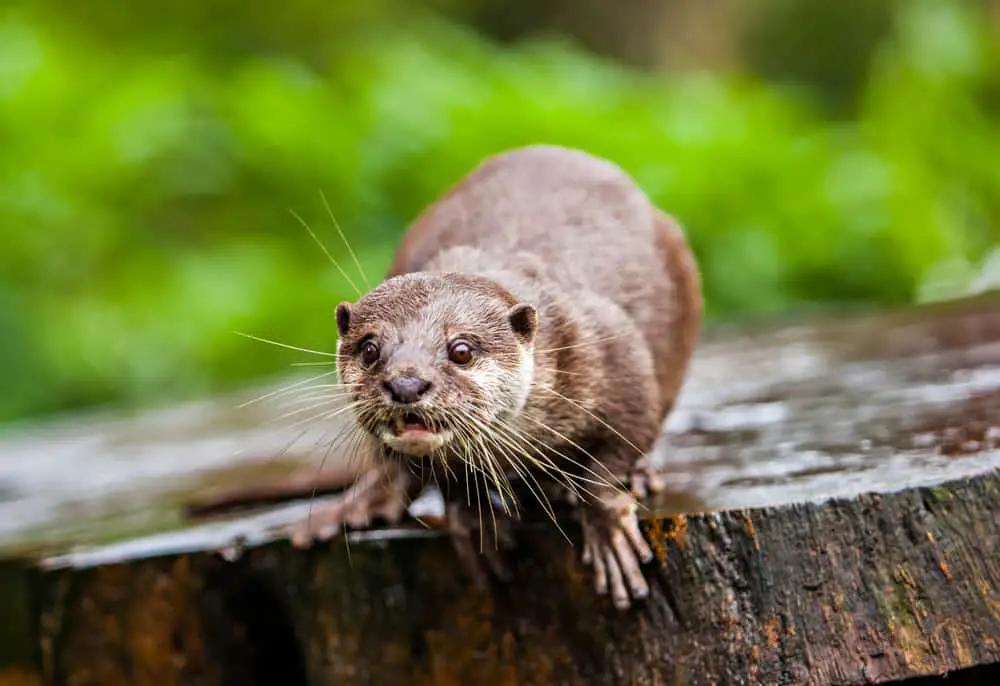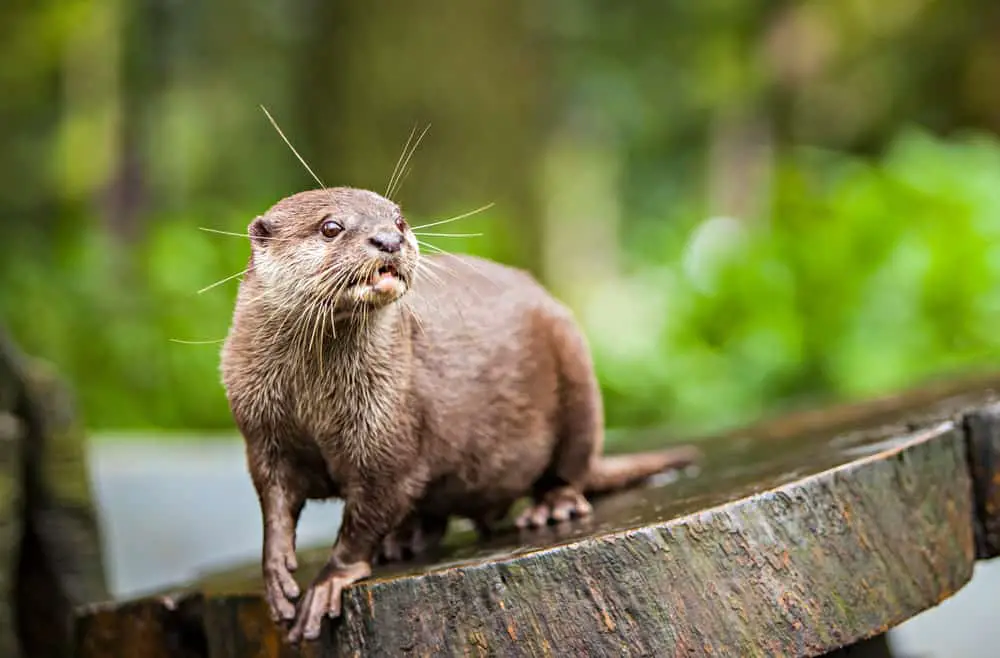The Family Prionodontidae, commonly known as Asian linsangs, are a group of small carnivorous mammals that inhabit the forests and jungles of Southeast Asia.
These elusive creatures are characterized by their slender bodies, elongated snouts, sharp teeth, and distinctive fur patterns.
Like many other species in the region, the Asian linsangs face numerous threats to their survival due to habitat loss, poaching for traditional medicine or food trade markets, and hunting for their pelts.
Despite being relatively unknown compared to larger predators such as tigers or leopards, these small cats play an important role in maintaining ecological balance within their ecosystems.
In this article, we will explore the fascinating world of the Family Prionodontidae – Asian linsangs and examine why conservation efforts must be made to protect them from human-induced threats before it is too late.

Genus
Genus Prionodon – linsangs
Physical Characteristics Of Asian Linsangs
The family Prionodontidae, commonly known as the Asian linsangs, comprises four species of small carnivorous mammals that inhabit dense forests across Southeast Asia. These animals have a slender body and long tail with fur ranging from reddish-brown to grayish in coloration. Their head is elongated with pointed ears, sharp teeth, and retractable claws ideal for hunting.
Asian linsangs are solitary hunters who primarily feed on rodents, birds, insects, and reptiles. They use their keen senses of hearing and smell to locate prey before ambushing them from above or below.
In terms of reproduction patterns, little is currently known about these elusive creatures since they are rarely observed in the wild. However, it is believed that they mate seasonally and give birth to 2-4 young after a gestation period of approximately two months.
Habitat And Range
The physical characteristics of Asian linsangs enable them to thrive in their natural habitat. These small carnivorous mammals have long, slender bodies and tails that help them balance while climbing trees. Their sharp claws allow them to grip onto branches tightly, and their retractable claws prevent them from getting caught on vegetation or prey. Additionally, the flexible ankle joints of linsangs make it possible for them to rotate their feet backward, enabling them to climb down vertically.
Asian linsangs are native to Southeast Asia’s tropical forests, where they live in dense underbrushes and thick canopies. They prefer habitats with a high diversity of tree species as this provides an abundance of food sources such as birds, insects, reptiles, rodents, and fruits.
Due to deforestation caused by human activities like logging and agriculture expansion, these forest ecosystems are becoming fragmented and disturbed. As a result, many populations of linsangs are facing threats such as habitat loss and degradation which negatively impacts their survival.
Conservation efforts aimed at protecting these unique animals’ habitats through reforestation programs and sustainable land use practices will be crucial in ensuring their continued existence in the wild.
Threats To Their Survival
The Asian linsangs are facing several threats that affect their survival in the wild. One of the most significant threats is hunting pressure, as these animals have been hunted for their fur and meat. In some countries, they are also considered a delicacy and used in traditional medicine. This has resulted in a decline in their population size, especially in areas where there is high demand for their products.
Additionally, habitat loss is another major concern for the Asian linsangs. The destruction of forests due to human activities such as logging and agriculture reduces the availability of suitable habitats and food sources. Furthermore, deforestation limits gene flow between different populations of Asian linsangs, which can lead to genetic isolation and increase the risk of extinction due to reduced genetic diversity.
As a result, conservation efforts must focus on addressing both hunting pressure and habitat loss by implementing strict laws against poaching and improving forest management practices. It is crucial to conduct further research into the ecology and behavior of this elusive species so that effective strategies can be developed to protect them from human-induced pressures while promoting sustainable development practices that benefit both people and wildlife alike.
Overall, unless measures are taken to address these issues soon, it’s likely that more populations will continue experiencing declines leading towards endangerment or even extinction. Therefore we need collective action at all levels – local communities through international organizations- if we’re going to save these creatures before it’s too late!
Ecological Importance
Like many other small carnivorous mammals, the Asian linsangs play an important role in their ecosystem. They are primarily nocturnal and arboreal creatures that inhabit forests throughout Southeast Asia, preying on a variety of insects, rodents, birds, reptiles, and even fruits. Their slender bodies and sharp claws make them excellent climbers as they navigate through the trees in search of prey.
The ecological importance of Asian linsangs lies in their ability to help regulate populations of smaller animals within their food web. By consuming species such as rats or insects, which can cause significant damage to crops or spread disease, the linsangs promote balance within their habitat.
Additionally, they serve as prey for larger predators such as leopards and large snakes, contributing to the overall health and diversity of wildlife communities in Southeast Asia.

Conservation Efforts
Ecological Importance of the family Prionodontidae, commonly known as Asian Linsangs, cannot be overstated. These small carnivorous mammals play a significant role in maintaining balance within their ecosystems by controlling populations of rodents and insects. Furthermore, they serve as prey for larger carnivores such as leopards and tigers. However, despite their importance, these elusive creatures are facing various threats ranging from habitat loss due to deforestation to poaching.
Conservation efforts aimed at protecting the family Prionodontidae must focus on community involvement and government policies that address both human-wildlife conflicts and habitat destruction. The table below highlights some potential conservation strategies:
| Conservation Strategy | Description | Potential Impact |
|---|---|---|
| Community Outreach Programs | Engage with local communities through education programs about the ecological importance of Asian Linsangs | Increase awareness leading to reduced hunting pressures and increased support for conservation efforts |
| Habitat Restoration Projects | Restore degraded habitats or create new habitats suitable for Asian Linsangs | Provide additional habitats which can increase population numbers |
| Enforcement of Laws Against Poaching and Illegal Wildlife Trade | Strengthen enforcement measures against illegal wildlife trade and poaching activities through collaboration between law enforcement agencies and other stakeholders. | Reduced demand for prionodontid products may decrease poaching pressure |
In conclusion, conserving prionodontids is critical not only to maintain ecosystem health but also to promote biodiversity conservation. Effective conservation efforts require collaboration among different stakeholders including governments, non-governmental organizations (NGOs), researchers, local communities, and industry players towards promoting sustainable use practices while minimizing negative impacts on these species’ survival prospects.
Future Outlook For Asian Linsangs
According to recent data, the population of Asian Linsangs has been steadily increasing in certain areas. This is a positive sign for the species as it was previously believed that their numbers were declining due to habitat loss and hunting. However, there is still much work to be done to ensure the long-term survival of these animals.
To continue supporting the growth of Asian Linsang populations and promote their conservation, here are some potential future outlooks:
- Increase protected areas: Establishing more protected areas will provide safe havens for linsangs and other endangered wildlife.
- Promote ecotourism: Ecotourism can provide economic benefits to local communities while also raising awareness about the importance of conserving biodiversity.
- Regulate hunting practices: Hunting regulations should be put in place to prevent overexploitation and protect vulnerable species such as linsangs.
- Encourage further research: More studies on Asian Linsangs’ behavior, ecology, and genetics are necessary for better understanding their needs and developing effective conservation strategies.
The continued population growth of Asian Linsangs gives hope that this unique family can persist despite ongoing threats from human activities. By implementing various conservation measures such as those listed above, we can ensure that these fascinating creatures thrive well into the future.
Conclusion
The family Prionodontidae, commonly known as the Asian linsangs, is a group of small carnivorous mammals found in Southeast Asia. These elusive creatures are famous for their long tails and unique physical characteristics that set them apart from other carnivores.
Asian linsangs inhabit dense forests and prefer to live at higher elevations. Their range extends from India to Indonesia, but they face numerous threats to their survival due to habitat loss, hunting, and the pet trade industry.
Despite this, these animals have an important ecological role in maintaining healthy forest ecosystems. Conservation efforts aimed at protecting Asian linsangs are underway, including habitat restoration programs and captive breeding initiatives. However, much work remains to be done before we can ensure the long-term survival of this fascinating species.
In conclusion, the Asian linsang is a remarkable animal that deserves our attention and protection. As conservation biologists continue working tirelessly to safeguard its future through various measures such as research on population size and distribution patterns or increasing awareness among local communities about the importance of conserving wildlife habitats – there is hope that we will see more success stories in preserving these incredible creatures for generations to come.
We must remain vigilant in our efforts towards conservation if we want future generations to experience the beauty of these magnificent animals alongside us.

